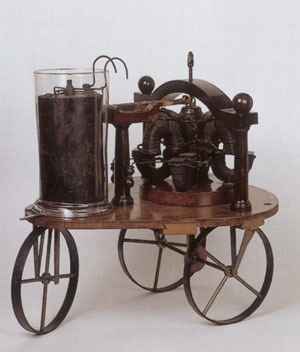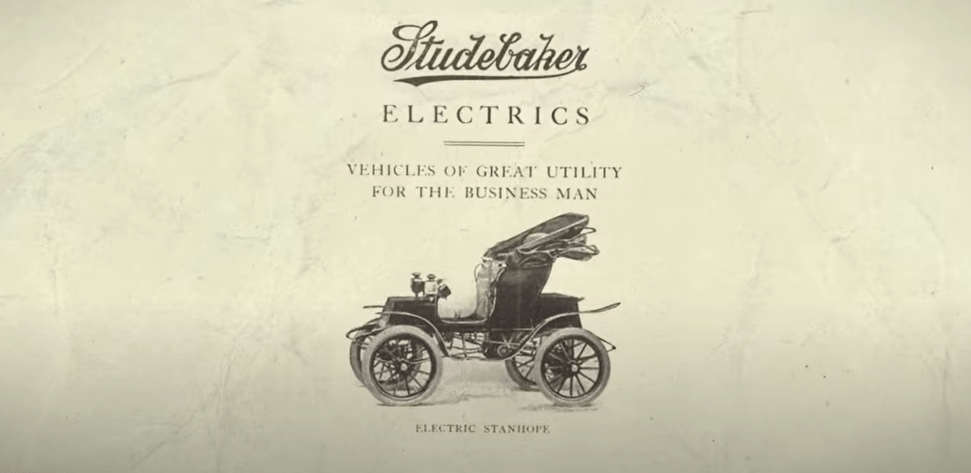Electric car existed before petrol car
Contrary to what many people think, the electric car already existed in the early nineteenth century. Why has the petrol car won the battle?
Contents
From Leonardo’s wind-up engine to steam engine
For thousands of years, humans had to move with the help of muscle power. Their own muscle power or that of a horse or ox. Ingenious inventions such as sand yachts or Leonardo da Vinci’s wind-up car were no more than a curiosity without much practical use. Until the steam engine of James Watt saw the light at the beginning of the 18th century.
A steam turbine, but without noise
Suddenly people realized that it was possible to build engines. The first real engine was the steam engine. Steam locomotives soon became popular and steam powered cars also appeared. But they made a lot of noise.
And as Lord of Stand you naturally wanted to be able to travel comfortably in your Old Schicht. Without first having to heat up the boiler for 20 minutes and then arriving smelling like coal. So when the first electric cars appeared on the market, they quickly became popular. But why did electric cars precede petrol cars?
Electric car easier than petrol car

An electric motor is much simpler than a petrol engine. You can even build an electric motor from two loosely wound wires that are connected to a power source with alternating current: the induction motor.
Because the power of the electric motor is continuous and easier to control than that of a petrol engine, you do not need a clutch. A gearbox, engine oil and the like are also superfluous. So actually it was not so strange that there were electric cars before petrol cars.
The very first models of electric cars, including those of the Groningen professor Sibrandus Stratingh, were already on the road around 1830.
The breakthrough of the electric car really came around 1880, when the pneumatic tire was invented and so was the battery. Not the powerful batteries used in electric bicycles, but lead batteries.
Inventor Gustave Trouvé drove through the streets of Paris at the mind-boggling speed of 15 km per hour. He caused a sensation, and everyone who mattered wanted an electric car.
Electric cars quickly increased in popularity. You could charge them at home or wherever power was available. Electric motors are quiet and do not pollute. In short, the arguments that you also hear now and which make many people a fan of the electric car. The big advantage: you didn’t have to crank them with a hand crank before your car could drive. The reason why an electric car won the race through the American city of Philadelphia against a petrol car in 1908. What’s not to love?
The demise of the electric car
Indeed, electric cars remained the most popular car until around 1910, followed by steam cars. Because at that time there were increasingly better and more affordable petrol engines. A ‘real guy’ in those days took a smelly and roaring petrol engine. An electric motor was seen as something for women.

The final blow for the electric car came around 1910, when the makers of petrol cars succeeded in getting rid of the cumbersome hand crank. Although the real machos lamented this loss. Oil, the fuel for petrol cars, also became cheaper and cheaper.
The scenes of motorists lurching frantically as the bridge reopened were now over. The great advantages of the petrol car at the time, fast refueling, the large range, high speeds and high power, meant the end of electric cars.
Until the early 1970s, with the onset of the oil crisis, only golf carts and similar vehicles would have an electric drive. Today’s batteries store much more energy per kilo than a lead battery. Electric motors are now even smaller and more compact. This explains why electric cars, and also electric bicycles, are becoming increasingly popular.


